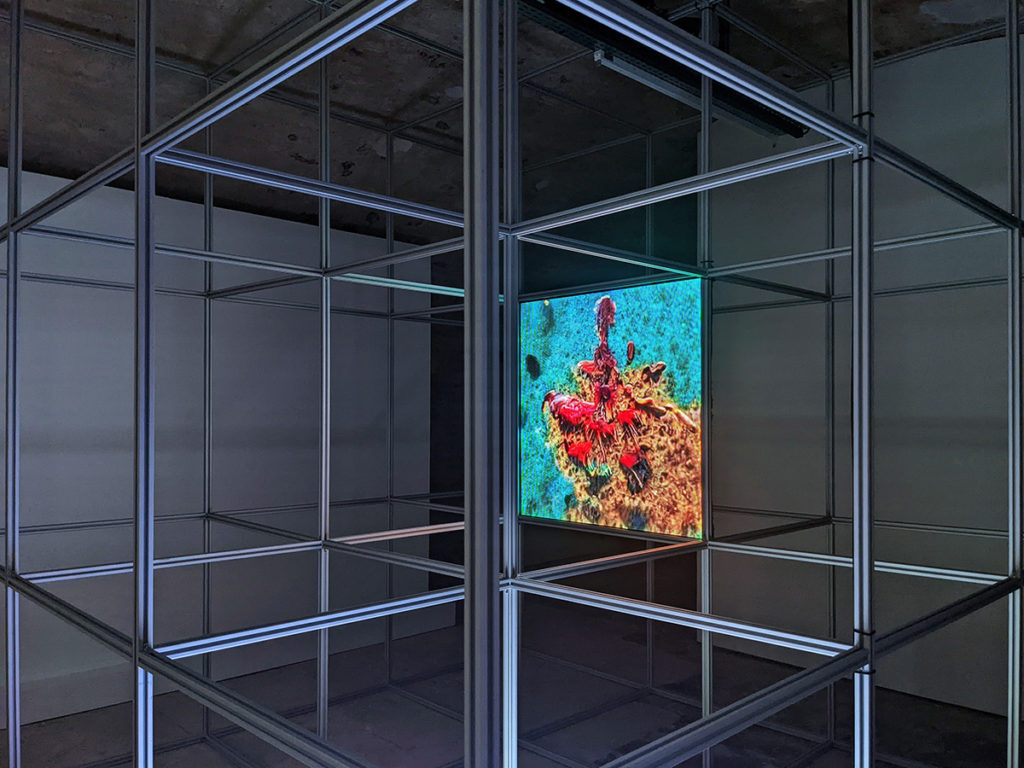Un espace latent matériel / A material latent space

Un espace latent est un ensemble d’objets dans lequel les objets qui se ressemblent le plus sont positionnés plus près les uns des autres. La position dans l’espace latent peut être considérée comme étant définie par un ensemble de variables latentes qui émergent des ressemblances entre les objets. La position de chaque objet peut évoluer et est variable selon les ressemblances émergentes, en particulier dans le cas de calculs qui réinjectent dans cet espace des résultats. On comprend alors que l’espace latent est transfini, il grandit plus vite que notre faculté à le parcourir. On lui attribue souvent un pouvoir quasi-magique, une opacité qu’il faudrait préciser, c’est la boite noire.
On adopte comme matériau des barres d’aluminium profilées permettant différents assemblages. On prend comme mesure 100cm (soit 94cm si on prend en compte l’épaisseur des barres) de sorte qu’un assemblage réalisé pour une exposition sera compatible avec un autre assemblage, passé ou avenir.
Il s’agit d’un espace latent dont la potentialité est transfinie et qui est intercompatible, anticipatif et rétroactif. Un mètre carré contient de façon latente l’ensemble des déploiements métriques imaginables. Cet espace peut se replier ou se déplier et permet comprendre comment à partir d’une forme finie, selon la leçon de Sol Lewitt, on peut déployer un espace transfini.
Cet espace latent matériel répond au développement d’un corpus artistique où chaque élément peut être isolé et dans cette déconnexion même, être relié à n’importe quel autre élément faisant de chacun d’entre eux un fragment. C’est ce que j’avais nommé ailleurs l’intercompatibilité.
–
A latent space is a set of objects in which the most similar objects are positioned closer together. The position in the latent space can be seen as being defined by a set of latent variables that emerge from the similarities between objects. The position of each object can evolve and is variable according to the emerging similarities, in particular in the case of computations that reinject results into this space. We understand then that the latent space is transfinite, it grows faster than our faculty to traverse it. It is often attributed a quasi-magical power, an opacity that should be specified, it is the black box.
We adopt as material profiled aluminum bars allowing various assemblies. We take as measure 100cm (that is 94cm if we take into account the thickness of the bars) so that an assembly realized for an exhibition will be compatible with another assembly, past or future.
It is a latent space whose potentiality is transfinite and which is intercompatible, anticipatory and retroactive. A square meter contains latently the whole of the imaginable metric deployments. This space can be folded or unfolded and allows us to understand how from a finite form, according to the lesson of Sol Lewitt, we can deploy a transfinite space.
This latent material space responds to the development of an artistic corpus where each element can be isolated and in this very disconnection, be linked to any other element making each of them a fragment. It is what I had named elsewhere the intercompatibility.
